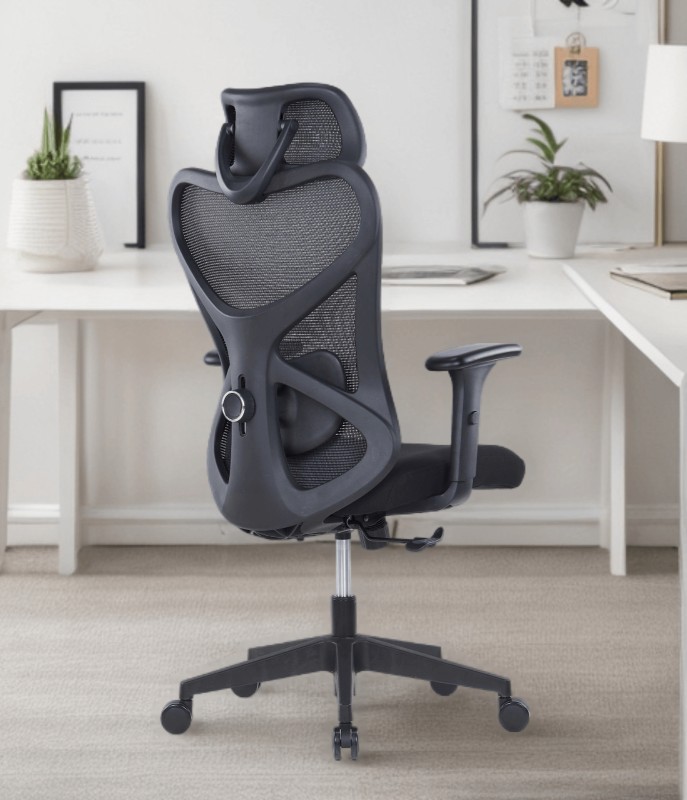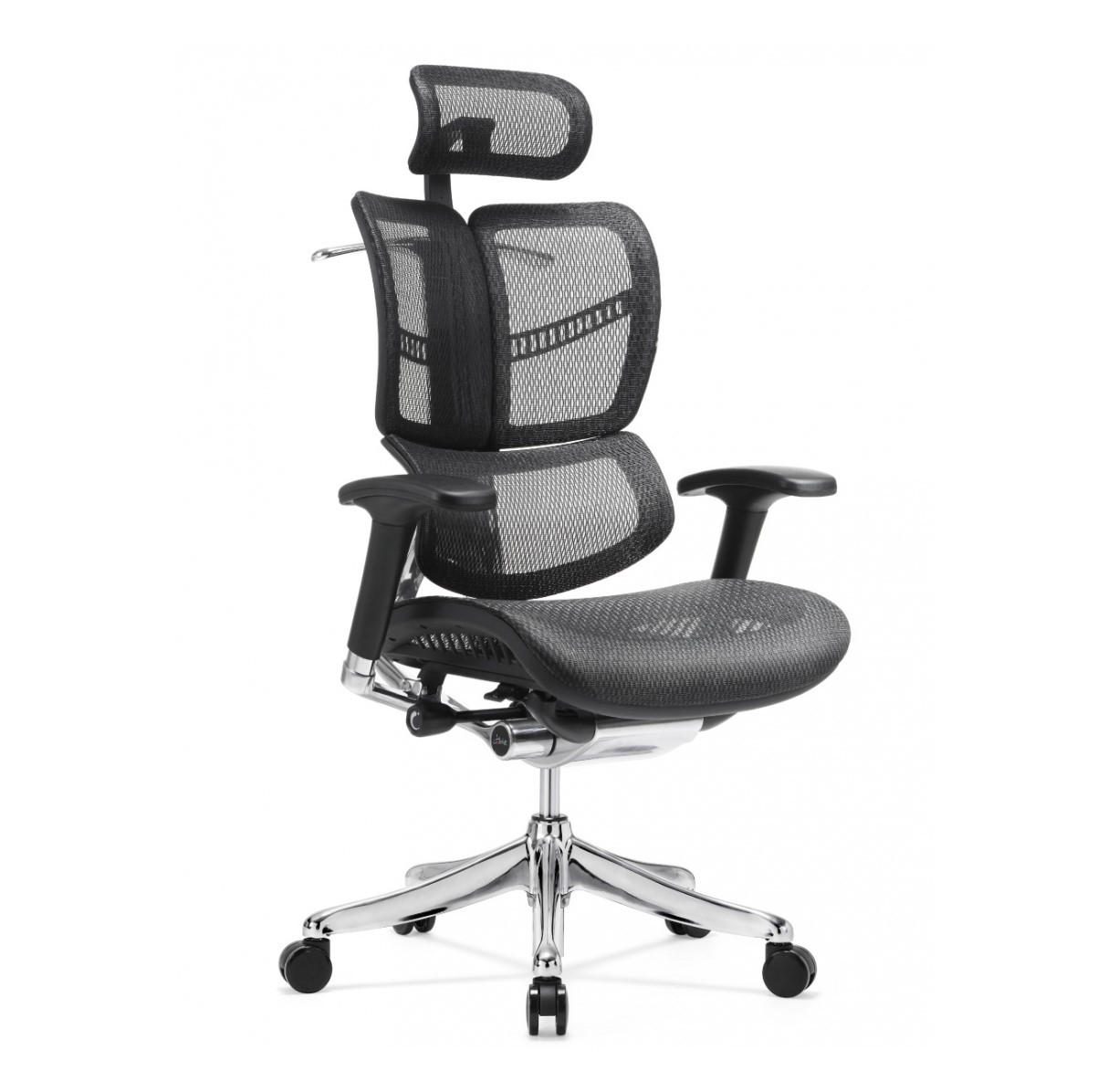
How to Choose a Chair for Editing, Gaming, and Creative Tasks
Introduction
Whether you're a video editor, gamer, or designer, your chair can make or break your productivity. Long hours at a desk demand more than just a stylish seat — they require ergonomic support, comfort, and adaptability. The right chair minimizes strain, encourages movement, and keeps you focused through hours of intense creative output or gaming sessions. In this article, we'll break down how to choose the ideal chair for editing, gaming, and creative tasks, so you can work smarter and sit longer without discomfort.
1. Prioritize Ergonomics for Long Sessions
Creative tasks and gaming often involve hours of sitting, so ergonomics must come first. A good chair should support the natural curve of your spine and provide proper lumbar support. Look for features like adjustable backrests, seat height, and armrests to align your posture and reduce strain over time.
2. Support for Focused Visual Work
Editing and design demand visual precision, which means your seating posture matters. A chair that lets you sit upright with your eyes level to the screen will prevent neck and eye strain. Choose a chair that supports a stable, upright position without compromising on comfort.
3. Breathability for Extended Use
If you’re spending long hours immersed in your craft or gaming, breathable materials are vital. Mesh chairs offer airflow that keeps you cool during intense sessions. This helps prevent discomfort and sweating, especially in warmer environments or under pressure.
4. Back Tilt and Recline Options for Flexibility
Every creative needs a break — and a reclining feature lets you relax without leaving your station. Chairs with adjustable back tilt or rocking functions let you shift positions and reduce stiffness during long work or gaming hours.
5. Arm Support that Matches Your Workflow
Typing, sketching, or gaming all require different arm positions. Adjustable armrests that move up, down, or pivot to your needs provide vital wrist and shoulder support. This reduces fatigue and prevents repetitive strain injuries.
6. Seat Depth and Cushioning
An ideal seat should support your thighs without cutting off circulation. For tasks like editing or gaming, look for cushioning that stays firm over time. A well-padded seat with the right depth keeps you grounded and balanced without discomfort.
7. Smooth Mobility and Swivel
Creative work often involves moving between devices, desks, or consoles. A chair with smooth-rolling casters and 360-degree swivel allows you to move effortlessly in your workspace, saving time and energy while keeping the flow going.
8. Height Adjustment for Proper Alignment
Your feet should rest flat on the floor, and your knees should be at a 90-degree angle. Height adjustment helps align your body correctly with your desk or console, enhancing comfort during both work and play.
9. Aesthetic Compatibility with Your Setup
Your chair should also match your space. Whether you're in a creative studio or gaming room, the chair's design and finish should complement your setup. Sleek mesh styles or bold contours can elevate the whole aesthetic.
10. Durability for Everyday Use
Creative professionals and gamers put their chairs to the test. Choose a model made with sturdy materials, reinforced frames, and durable upholstery to withstand daily use. Longevity ensures the chair remains supportive even after years of work and play.
Additional Considerations When Choosing a Multi-Task Chair
Adjustability Across Multiple Zones
Look for chairs that offer multi-zone adjustability—headrest, armrests, lumbar support, and tilt settings—so it adapts to a variety of uses without needing to switch chairs.
Noise-Free Functionality
If you're recording voiceovers or streaming, a silent tilt or recline mechanism ensures no creaks or clanks interrupt your content.
Comfort During Active Breaks
Chairs with a rocking or dynamic recline function help during short mental breaks, encouraging gentle movement without needing to stand up completely.
Lumbar Support for Creative Focus
Deep focus tasks benefit from reliable lumbar support. When you’re in the zone, your chair should maintain your spine’s natural alignment without shifting.
Compactness for Studio or Gaming Rooms
If space is tight, pick a chair with a sleek design and smaller base that doesn’t compromise on ergonomics but still fits neatly in your environment.
High Weight Capacity and Stability
Stability matters for long hours and sudden movements, especially in gaming. A solid base and high weight tolerance ensure safety and performance.
Easy Maintenance and Clean Materials
Creative tasks can get messy. Look for chairs made of materials that are easy to wipe clean or maintain, especially for high-use setups.
Footrest Add-On Compatibility
Some creative users benefit from footrests. Ensure your chair’s design accommodates optional footrest attachments if you want that added relaxation.
Seat Edge Comfort
The front edge of the seat should have a waterfall design or be softly contoured to reduce pressure behind your knees.
Warranty and Support
A long-term warranty reflects the manufacturer's confidence in the chair. This is important for anyone depending on their chair daily for both work and leisure.
Recommended Products:
-
Ucomfort Super Ergonomic Executive Office Chair (High Back - Black)
A premium option for editing and gaming setups. Offers advanced lumbar support, smooth recline functions, and a high back for full-body comfort. -
Zonko Butterfly Super Ergonomic Executive Mesh Chair
Perfect for creative professionals and gamers alike, this chair features a breathable mesh design, adaptive tilt, and responsive lumbar support for all-day use.
Final Thoughts
Choosing a chair for editing, gaming, and creative tasks is about finding the right balance of comfort, support, and adaptability. Whether you’re piecing together video edits, immersed in a design project, or chasing victories in a gaming marathon, the right chair enhances every moment. Prioritize ergonomic features, breathable materials, and adjustability to create a seat that works just as hard as you do.
FAQ
Q: What is the best type of chair for gaming and editing combined?
A: A chair with ergonomic features like lumbar support, tilt, and breathable mesh—such as the Zonko Butterfly Mesh Chair—is great for both purposes.Q: Is mesh or leather better for long creative sessions?
A: Mesh offers better breathability, making it ideal for long hours. However, leather can provide a more premium feel if the environment is climate-controlled.




